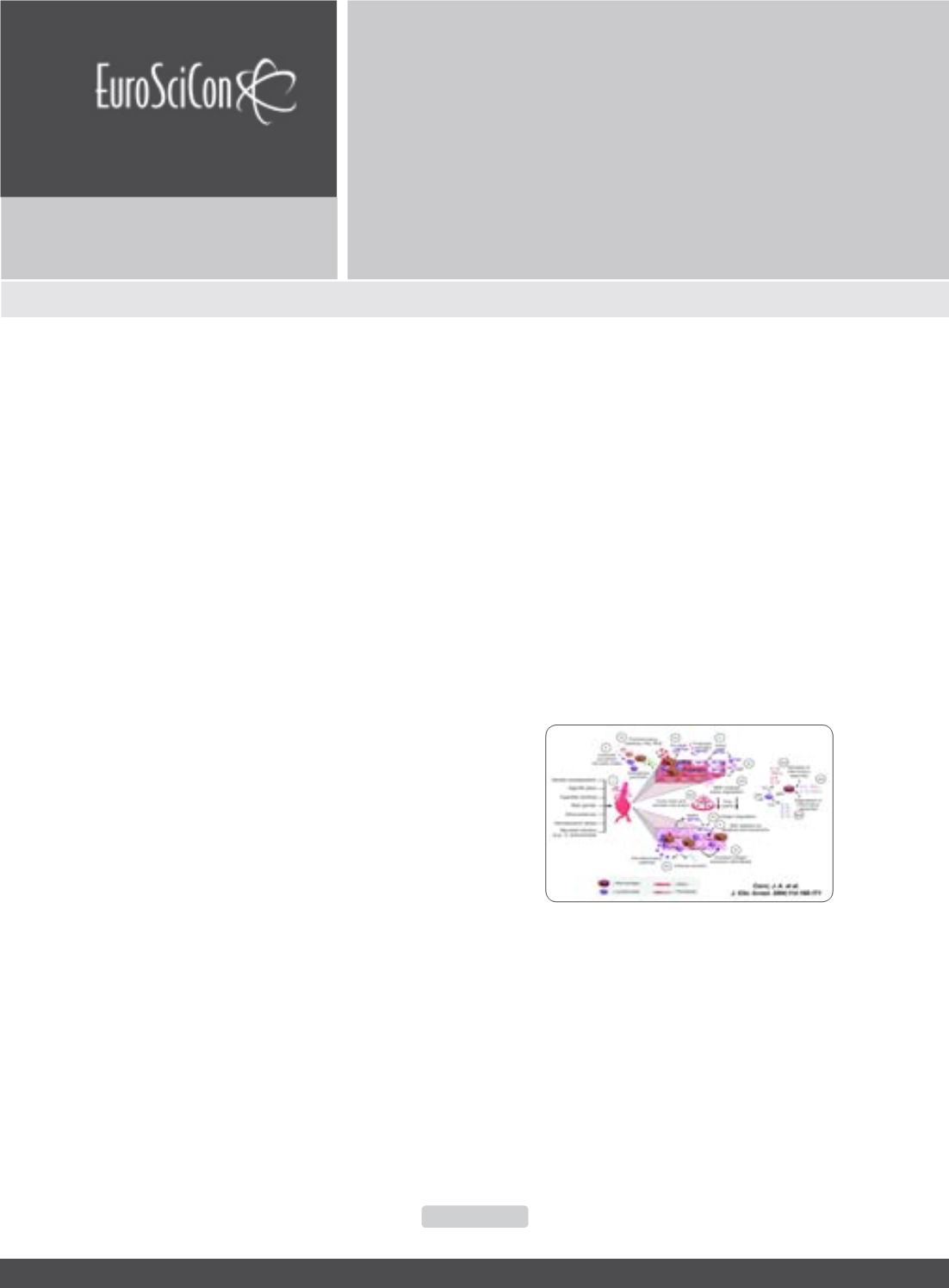

Vascular Surgery 2019
Journal of Vascular and Endovascular Therapy
ISSN: 2573-4482
Page 60
March 28-29, 2019
Rome, Italy
Vascular Surgery
4
th
Edition of World Congress & Exhibition on
S Urbonavicius et al., J Vasc Endovasc Therapy 2019, Volume 4
DOI: 10.21767/2573-4482-C1-006
Is oxidative stress important in AAA pathogenesis?
S Urbonavicius
1
, M Urbonavicius
2
, A Høgh
1
and
G Urbonaviciene
3
1
Hospitalsenhed Midt, Viborg, Denmark
2
University of Copenhagen, Denmark
3
Hospitalsenhed Midt, Silkeborg, Denmark
Objective:
Active investigations continue to identify
markers other than size that would predict a risk of
AAA rupture. Circulating biomarkers could also indicate
optimal intervals between the surveillance intervals.
Finally, the identification of biomarkers also may identify
potential pathogenic pathways, and thus may open
possibilities for pharmacological inhibition of growth.
In the search of novel biomarkers of AAA progression,
serum and wall material proteins were analyzed by a
differential proteomic approach.
Methods & Results:
Same layers of AAA wall
from ruptured (rAAA) and non-ruptured AAA were
incubated, and the proteins released were analyzed by
2-dimensional difference in-gel electrophoresis. Proteins
from serum were analyzed and correlated with AAA
annual expansion rate. Several differentially expressed
proteins involved in main AAA pathological mechanisms
(proteolysis, oxidative stress, and thrombosis) were
identified by mass spectrometry. Among the proteins
identified, peroxiredoxin-2 (PRX-2) was more permanent,
which was further validated by Western blot and
immunohistochemistry. We demonstrated increased
PRX-2 serum levels in rAAA patient wall material
comparedwithAAAsubjects andalsopositive correlation
in serum among PRX-2 and AAA diameter and annual
expansion rate. Finally, a prospective study revealed a
positive correlation between PRX-2 serum levels and
AAA expansion rate.
Conclusions:
Several proteins associated with AAA
pathogenesis have been identified by a proteomic
approach. Protein profiles identified in the serum would
appear to be a convenient monitoring tool that has the
ability to be both sensitive and specific for AAAs. Among
them, PRX-2 serum levels are increased in AAA patients
and correlate with AAA size and growth rate, suggesting
the potential use of PRX-2 as a biomarker for AAA
evolution.
Recent Publications
1. Nordon I, Brar R, Hinchliffe R, Cockerill G, Loftus
I andThompsonM (2009) The role of proteomic
research in vascular disease. J Vasc Surg.
49(6):1602-12.
2. Martinez Pinna R, Ramos Mozo P, Madrigal
MatuteJ, BlancoColioLM, LopezJA, CalvoE, et
al. (2011) Identification of peroxiredoxin‐1 as a
novel biomarker of abdominal aortic aneurysm.
Arterioscler Thromb Vasc Biol. 31(4):935‐43.
















